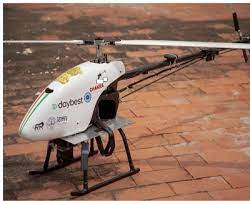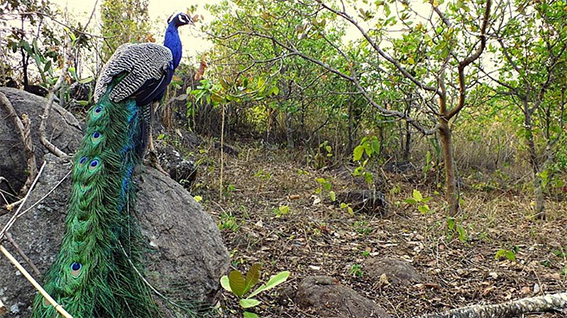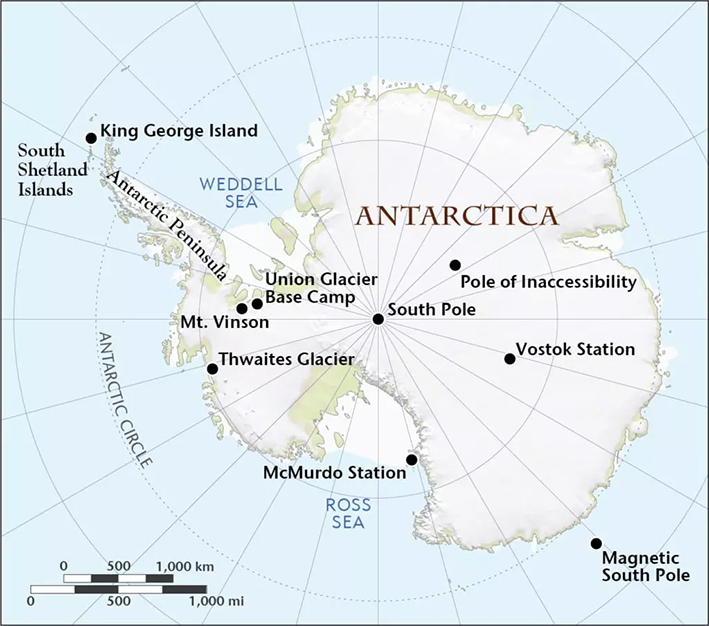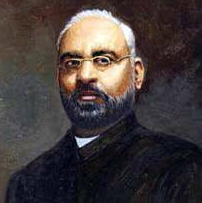Pandora Papers Leak
Why in News
Recently, several prominent Indian names have been included in the Pandora Papers leak.
- There are over 300 Indian names in the leak, including over 60 prominent ones.
- Pandora Papers are 11.9 million leaked files from 14 global corporate services firms which set up about 29,000 off-the-shelf companies and private trusts.
Trust
- About:
- A trust can be described as a fiduciary arrangement where a third party, referred to as the trustee, holds assets on behalf of individuals or organisations that are to benefit from it.
- A trust is not a separate legal entity, but its legal nature comes from the ‘trustee’. At times, the ‘settlor’ appoints a ‘protector’, who has the powers to supervise the trustee, and even remove the trustee and appoint a new one.
- Indian Law:
- The Indian Trusts Act, 1882, gives legal basis to the concept of trusts. Indian laws recognise the trust as an obligation of the trustee to manage and use the assets settled in the trust for the benefit of ‘beneficiaries’. India also recognises offshore trusts.
Off-the-Shelf Company
- An 'off-the-shelf' company or ready-made company is a pre-registered limited company, however, it has never been traded. An 'off-the-shelf' company is ready for immediate use and can be purchased after paying a certain cost for it.
Key Points
- About:
- The Pandora Papers reveal how trusts are used as a vehicle in conjunction with offshore companies set up for the sole purpose of holding investments and other assets by business families and ultra-rich individuals.
- The trusts can be set up in known tax havens which offer relative tax advantages.
- For Example: Samoa, Belize, Panama, and the British Virgin Islands.
- They reveal how the rich set up complex multi-layered trust structures for estate planning, in jurisdictions which are loosely regulated for tax purposes, but characterised by air-tight secrecy laws.
- Businesses have created a new normal after countries have been forced to tighten the laws on such offshore entities with rising concerns of money laundering, terrorism funding, and tax evasion.
- The Panama and Paradise Papers dealt largely with offshore entities set up by individuals and corporations respectively.
- The Pandora Papers reveal how trusts are used as a vehicle in conjunction with offshore companies set up for the sole purpose of holding investments and other assets by business families and ultra-rich individuals.
- Reasons for Setting up Trusts Overseas:
- Secrecy:
- Overseas trusts offer remarkable secrecy because of stringent privacy laws in the jurisdiction they operate in.
- Maintain a Degree of Separation:
- Businesspersons set up private offshore trusts to project a degree of separation from their personal assets.
- Avoid Tax in the Guise of Planning:
- Businesspersons avoid their Non-resident Indians (NRI) children being taxed on income from their assets by transferring all the assets to a trust.
- Prepare for Estate Duty Eventuality:
- There is a pervasive fear that estate duty, which was abolished back in 1985 will likely be re-introduced soon.
- Setting up trusts in advance will protect the next generation from paying the death/inheritance tax, which was as high as 85% in the more than three decades after its enactment (The Estate Duty Act, 1953).
- Flexibility in a Capital-Controlled Economy:
- India is a capital-controlled economy. Individuals can invest only USD 2,50,000 a year under the Reserve Bank of India’s Liberalised Remittance Scheme (LRS).
- To get over this, businesspersons have turned to NRI , and under Foreign Exchange Management Act, 1999, NRIs can remit USD 1 million a year in addition to their current annual income, outside India.
- Further, the tax rates in overseas jurisdictions are much lower than the 30% personal Income-Tax rate in India
- Secrecy:
- Grey Areas of Indian Taxation:
- There are certain grey areas of taxation where the Income-Tax Department is in contest with offshore trusts.
- After the Black Money (Undisclosed Foreign Income and Assets) and Imposition of Tax Act, 2015, came into existence, resident Indians have to report their foreign financial interests and assets.
- NRIs are not required to do so.
- The I-T Department may consider an offshore trust to be a resident of India for taxation purposes if the trustee is an Indian resident.
- In cases where the trustee is an offshore entity or an NRI, if the tax department establishes the trustee is taking instructions from a resident Indian, then too the trust may be considered a resident of India for taxation purposes.
- Government’s Initiatives:
- Legislative Action:
- International Cooperation:
- Double Taxation Avoidance Agreements (DTAAs):
- India is proactively engaging with foreign governments with a view to facilitate and enhance the exchange of information under Double Taxation Avoidance Agreements (DTAAs)/Tax Information Exchange Agreements (TIEAs)/Multilateral Conventions.
- Automatic Exchange of Information:
- India has been a leading force in the efforts to forge a multilateral regime for proactive sharing of financial information known as Automatic Exchange of Information which will greatly assist the global efforts to combat tax evasion.
- Foreign Account Tax Compliance Act of USA:
- India has entered into an information sharing agreement with the USA under the act.
- Double Taxation Avoidance Agreements (DTAAs):
- Legislative Action:
2nd Phase of SBM-U
Why in News
Recently, the Prime Minister launched the second phase of Swachh Bharat Mission-Urban (SBM-U 2.0).
- The Ministry of Housing and Urban Affairs (MoHUA) is the nodal ministry for the scheme.
Key Points
- About:
- SBM-U 2.0, announced in Budget 2021-22, is the continuation of SBM-U first phase. The government is trying to tap safe containment, transportation, disposal of faecal sludge, and septage from toilets.
- SBM-U first phase was launched on 2nd October 2014 aiming at making urban India Open Defecation Free (ODF) and achieving 100% scientific management of municipal solid waste. It lasted till October 2019.
- It will be implemented over five years from 2021 to 2026 with an outlay of Rs.1.41 lakh crore
- SBM-U 2.0, announced in Budget 2021-22, is the continuation of SBM-U first phase. The government is trying to tap safe containment, transportation, disposal of faecal sludge, and septage from toilets.
- Aim:
- It focuses on source segregation of garbage, reduction in single-use plastic and air pollution, by effectively managing waste from construction and demolition activities and bioremediation of all legacy dump sites.
- Under this mission, all wastewater will be treated properly before it is discharged into water bodies, and the government is trying to make maximum reuse a priority.
- Mission outcomes:
- All statutory towns will become ODF+ certified (focuses on toilets with water, maintenance and hygiene)
- All statutory towns with less than 1 lakh population will become ODF++ certified (focuses on toilets with sludge and septage management).
- 50% of all statutory towns with less than 1 lakh population will become Water+ certified (aims to sustain toilets by treating and reuse of water).
- All statutory towns will be at least 3-star Garbage Free rated as per MoHUA’s Star Rating Protocol for Garbage Free cities.
- Bioremediation of all legacy dumpsites.
- Progress under SBM-U Phase -I:
- 4,324 urban local bodies have been declared Open Defecation Free, which has been made possible through the construction of more than 66 lakhs individual household toilets and over 6 lakhs community/public toilets, far exceeding the Mission’s targets.
- Digital enablements such as Swachhata App, the digital grievance redressal platform introduced by MoHUA in 2016, has reinvented the way in which citizen grievance redressal is managed.
- Swachh Survekshan, the world’s largest urban cleanliness survey covering over 4,000 Urban Local Bodies was initiated under SBM-Urban in 2016.
2nd Phase AMRUT Mission
Why in News
Recently, the Prime Minister launched the second phase of Atal Mission for Rejuvenation and Urban Transformation (AMRUT 2.0).
- The Ministry of Housing and Urban Affairs (MoHUA) is the nodal ministry for the scheme.
Key Points
- About:
- It is the continuation of the AMRUT mission launched in June 2015 to ensure that every household has access to a tap with the assured supply of water and a sewerage connection.
- AMRUT 2.0 aims to provide 100% coverage of water supply to all households in around 4,700 ULBs (Urban Local Bodies).
- It also seeks to promote Atmanirbhar Bharat through encouraging Startups and Entrepreneurs (Public Private Partnership).
- Objectives:
- It will build upon the progress of AMRUT to address water needs, rejuvenate water bodies, better manage aquifers, reuse treated wastewater, thereby promoting a circular economy of water.
- It will provide 100% coverage of sewerage and septage in 500 AMRUT cities.
- Recycling and reuse of treated wastewater is expected to cater to 20% of total water needs of the cities and 40% of industrial demand. Under the Mission, fresh water bodies will be protected from getting polluted to make natural resources sustainable.
- Pey Jal Survekshan will be conducted in cities to ascertain equitable distribution of water, reuse of wastewater and mapping of water bodies.
- Performance of AMRUT Phase-I:
- 1.14 crore water tap connections have been provided taking total connections to 4.14 crore in AMRUT cities.
- Credit rating work has been completed in 470 cities. Of which, 164 cities have received Investable Grade Rating (IGR), including 36 cities with rating of A- or above.
- Rs 3,840 crore has been raised through Municipal Bonds by 10 ULBs. The Online Building Permission System has been implemented in 2,471 cities including 455 AMRUT cities.
- This reform has helped improve India’s rank in Ease of Doing Business in construction permits to 27 in Doing Business Report (DBR) 2020 of World Bank from 181 in 2018.
- 89 lakh conventional streetlights have been replaced with energy efficient LED lights, leading to estimated energy savings of 195 crore units per annum & reduction in CO2 emission by 15.6 lakh tons per annum.
Marine Protected Areas in Antarctica
Why in News
India has extended its support for protecting the Antarctic environment and for co-sponsoring the proposal of the European Union for designating East Antarctica and the Weddell Sea as Marine Protected Areas (MPAs).
- The Southern Ocean, also called Antarctic Ocean, is a body of salt water covering approximately one-sixteenth of Earth’s total ocean area.
Key Points
- Marine Protected Areas:
- In general terms, a Marine Protected Area (MPA) is a marine area that provides protection for all or part of the natural resources it contains.
- Within an MPA, certain activities are limited, or entirely prohibited, to meet specific conservation, habitat protection, ecosystem monitoring or fisheries management objectives.
- MPAs do not necessarily exclude fishing, research or other human activities; in fact, many MPAs are multi-purpose areas.
- The Commission for the Conservation of Antarctic Marine Living Resources (CCAMLR) has agreed a framework that describes the objectives and requirements for establishing MPAs.
- MPAs in Antarctica:
- Currently, only 5% of the Southern Ocean is protected. MPAs were established in the South Orkney Islands in 2009 and the Ross Sea region in 2016.
- Another three proposals for MPAs are being considered for East Antarctica, the Weddell Sea, and the Antarctic Peninsula.
- MPA proposals are driven by conservation and sustainable utilization principles and adhering to the global cooperation frameworks (such as Sustainable Development Goals, UN Decade of Oceans, Convention on Biodiversity, etc.)
- India is a signatory to these conventions or agreements.
- India urged the Commission for the Conservation of Antarctic Marine Living Resources (CCAMLR) member countries to ensure that India remains associated with the formulation, adaptation and implementation mechanisms of these MPAs in future.
- Need to Establish MPAs:
- The health of the Southern Ocean is driven by changes to the ocean itself - such as:
- Ocean Acidification
- Changes in sea-ice concentration
- Events triggered by climate change such as heat waves and extreme weather.
- These changes affect the marine ecosystem and species of the Antarctic region.
- Further, in response to these impacts, the threat of new and invasive species in the Southern Ocean is growing and endemic marine species like penguins are experiencing a historic die-off.
- Apart from this there is a rapid increase in melting of glaciers in Antarctica . For example, Thwaites Glacier.
- Studies show that MPAs can help vulnerable ecosystems build resilience to climate change by eliminating additional stresses such as fishing.
- In addition, their relatively undisturbed waters provide a natural laboratory for studying how intact marine ecosystems react to a warming and acidifying ocean.
- The health of the Southern Ocean is driven by changes to the ocean itself - such as:
- About Convention on the Conservation of Antarctic Marine Living Resources (CCAMLR):
- CCAMLR is a multilateral response to concerns that unregulated increases in krill catches in the Southern Ocean could be detrimental for Antarctic marine ecosystems particularly for seabirds, seals, whales and fish that depend on krill for food.
- CCAMLR was established by international convention in 1982 with the objective of conserving Antarctic marine life.
- An important feature of CCAMLR is the ecosystem approach to conservation, requiring that the effects on the ecosystem must be taken into account in managing the harvesting of marine resources.
- It’s Secretariat is located in Hobart, Tasmania, Australia.
- India is expanding its infrastructure development in Antarctica.
- The newest base commissioned in 2015 is Bharati.
- India is rebuilding its second station, Maitri, to make it bigger and last for at least 30 more years.
- Dakshin Gangotri, the first Indian base established in 1984, has weakened and become just a supply base.
Antarctic Treaty System
- There are few related agreements that make up the Antarctic treaty system. They are as follows:
- The Protocol on Environmental Protection to the Antarctic Treaty (Madrid, 1991)
- The Convention for the Conservation of Antarctic Seals (CCAS, London, 1972)
- The Convention on the Conservation of Antarctic Marine Living Resources (CCAMLR, Canberra, 1980).
Astro Robot
Why in News
Recently, Amazon has unveiled its ‘Astro’ home robot, which is designed to help customers with a range of tasks like home monitoring and keeping in touch with family.
- However, civil society has highlighted the concerns of privacy issues of 24×7 surveillance.
Key Points
- About Astro Robot:

- Astro is primed to be a home security device. It is designed to move around the home and keep a check on pets, and detect something unusual in the absence of the owner.
- It comes with a “periscope” camera that pops up from its head and can be used to keep an eye on the home.
- It is basically a combination of the Echo Show (smart speaker) and sophisticated Ring security camera integrated into one single device.
- The device captures live videos, recognises faces, plays music or videos, and delivers a beer across the home.
- It can recognise the faces of people and analyse them until it figures out if it’s a family member or an outsider.
- Issues Related to Privacy:
- Civil society is worried that the amount of data Amazon gets to fetch with the Astro, giving the company easy access to the household,
- This is going one step beyond Alexa which had access to vocals and sound until now.
- Amazon has asserted that Astro stores face data locally rather than in the cloud, but it is still a privacy concern as with any internet-connected device.
- There are concerns of stealing or hacking of the device. Due to this, the perpetrator can get access to the digital map that the robot creates of someone’s home.
- The prime concern, in the long-run, could contribute to greater public acceptance of Artificial Intelligence-powered surveillance.
- In the past, hackers have managed to access Ring cameras, used in the devices of Amazon technologies.
- Civil society is worried that the amount of data Amazon gets to fetch with the Astro, giving the company easy access to the household,
- Other Recent Experiments:
- Softbank earlier this year “suspended” the production of Pepper, one of the first humanoid robots able to “read” emotions.
- Jibo has started an Indiegogo project, which aims to build a world’s first social robot for the home.
Robotics
- About:
- Robotics is a branch of engineering that involves the conception, design, manufacture and operation of robots.
- Robot is any automatically operated machine that replaces human effort.
- The objective of the robotics field is to create intelligent machines that can assist humans in a variety of ways.
- Robotics is a branch of engineering that involves the conception, design, manufacture and operation of robots.
- Advantages:
- In many situations robots can increase productivity, efficiency, quality and consistency of products.
- Robots can work in environments which are unsafe for humans as they don’t have the same environmental requirements that humans do – such as lighting, air conditioning or noise protection.
- Robots have some sensors/actuators which are more capable than humans.
- Unlike humans, robots don’t get bored. Until they wear out, they can do the same thing again and again.
- They can be very accurate – to fractions of an inch (as is needed for example in manufacturing of microelectronics).
- Disadvantages:
- The use of robots can create economic problems if they replace human jobs.
- Robots can only do what they are told to do – they can’t improvise
- This means that safety procedures are needed to protect humans and other robots.
- Although robots can be superior to humans in some ways, they are less dexterous than humans.
- Robotics lack emotional intelligence, which plays a critical role in intense situations.
- Often robots are very costly – in terms of the initial cost, maintenance, the need for extra components and the need to be programmed to do the task.
- Surveillance concerns pose a problem of entering a privacy nightmare.
Drone-Based Vaccine Delivery Model: i-Drone
Why in News
Recently, the Ministry of Health and Family Welfare has launched a Drone-Based vaccine delivery model named, Drone Response and Outreach in North East (i-Drone).
- Drone is a layman terminology for Unmanned Aircraft (UA). There are three subsets of Unmanned Aircraft- Remotely Piloted Aircraft, Autonomous Aircraft and Model Aircraft.
Key Points
- About:

- Indian Council of Medical Research (ICMR) has devised the model to make sure that life-saving vaccines reach everyone.
- It has been designed to facilitate vaccine delivery to tough and hard-to-reach terrains of India.
- Currently, the drone based delivery project has been granted permission for implementation in Manipur and Nagaland, as well as union territory of Andaman and Nicobar Island.
- The permission was granted to the ICMR for conducting feasibility study of Covid-19 vaccine delivery using drones, in collaboration with IIT-Kanpur.
- Significance:
- It will help in overcoming the gaps in current vaccine delivery mechanisms and can be used in delivering important life-saving medicines, collecting blood samples etc.
- This technology can also be used in critical situations. It can be a game changer in addressing the challenges in health care delivery, particularly health supplies in difficult areas.
- Other Projects Using Drones:
- Telangana government has selected 16 Primary Healthcare Centres (PHCs) for pilot testing the ambitious ‘Medicine from the sky’, the first-of- its-kind project.
- The International Crops Research Institute (ICRISAT) was permitted to deploy drones for agricultural research activities, apart from some agriculture universities and educational institutions.
Indian Council of Medical Research
- It is the apex body in India for the formulation, coordination and promotion of biomedical research.
- Its mandate is to conduct, coordinate and implement medical research for the benefit of the Society; translating medical innovations into products/processes and introducing them into the public health system.
- It is funded by the Government of India through the Department of Health Research, Ministry of Health & Family Welfare.
Shyamji Krishna Varma
Why in News
The Prime Minister paid tributes to revolutionary freedom fighter Shyamji Krishna Varma on his birth anniversary (4th October).
Key Points
- Shyamji Krishna Varma was born on 4th October, 1857 in Mandvi town of Kachchh district of Gujarat.
- He was an expert in Sanskrit and other languages.
- His deep knowledge of the Sanskrit language caught the attention of Monier Williams, a professor of the subject in Oxford University.
- He was inspired by Bal Gangadhar Tilak, Swami Dayanand Saraswati and Herbert Spencer.
- He founded the Indian Home Rule Society, India House and The Indian Sociologist in London.
- Indian Home Rule Society and the India House worked towards inspiring youngsters in Britain to take up revolutionary activities against their own representatives in India.
- The monthly Indian Sociologist became an outlet for nationalist ideas and through the Indian Home Rule Society, he criticised the British rule in India.
- Varma became the first President of Bombay Arya Samaj. He inspired Veer Savarkar who was a member of India House in London. Verma also served as the Divan of a number of states in India.
- Swami Dayanand Saraswati was the founder of the Hindu reform organisation Arya Samaj.
- He was a barrister in London, when in 1905, he was barred from practising law by the Inner Temple following charges of sedition for writing against the colonial government.
- The move was significant as the Honourable Society of the Inner Temple is one of the four professional associations for barristers and judges in London.
- He was posthumously reinstated by the Inner Temple in 2015 after the Inn’s governing council noted that Varma “did not receive an entirely fair hearing”.
- In the face of criticism by the British, Varma shifted his base from England to Paris and continued his movement.
- After the outbreak of the First World War (1914-18), however, he moved to Geneva in Switzerland and spent the rest of his life there. He died on 30th March, 1930.
Nobel Prize for Physiology/Medicine, 2021
Why in News
Recently, two United States-based scientists, David Julius and Ardem Patapoutian, have been awarded the 2021 Nobel Prize for Physiology/Medicine for their discoveries of receptors for temperature and touch.
- They have focused their work on the field of somatosensation, that is the ability of specialised organs such as eyes, ears and skin to see, hear and feel.
Key Points
- About the Discoveries:
- David Julius:
- He discovered TRPV1, a heat-sensing receptor.
- His findings on the skin’s sense of temperature was based on how certain cells react to capsaicin, the molecule that makes chili peppers spicy, by simulating a false sensation of heat.
- Ardem Patapoutian:
- He discovered two mechanosensitive ion channels known as the Piezo channels.
- The Piezo1 is named after the Greek word for pressure, ‘píesi’.
- He is credited for finding the cellular mechanism and the underlying gene that translates a mechanical force on our skin into an electric nerve signal.
- He discovered two mechanosensitive ion channels known as the Piezo channels.
- David Julius:
- Significance of Discoveries:
- The findings have allowed us to understand how heat, cold and mechanical force can initiate the nerve impulses that allow us to perceive and adapt to the world around us.
- This knowledge is being used to develop treatments for a wide range of disease conditions, including chronic pain.
Note
- Somatosensation is a collective term for the sensations of touch, temperature, body position, and pain recognized through neural receptors in the skin and certain internal organs.
- It includes processes such as” mechanoreception, thermoreception, proprioception.
- Mechanosensitive channels are fascinating proteins, being able to serve both as sensors and effectors.
- Embedded in membranes, they convert mechanical stimuli such as in-plane membrane tension and curvature into electrical or biochemical signals, leading to regulation of a wide repertoire of cellular processes allowing adaptive response.
About Nobel Prizes
- The will of the Swedish scientist Alfred Nobel established the five Nobel prizes in 1895.
- The Nobel Prizes are a set of recognition given to fields of Chemistry, Literature, Peace, Physics, and Physiology or Medicine by The Nobel Foundation.
- The Nobel Foundation is a private institution established in 1900, has ultimate responsibility for fulfilling the intentions in Alfred Nobel’s will.
- The prizes in Chemistry, Literature, Peace, Physics, and Physiology or Medicine were first awarded in 1901.
- In 1968, Sveriges Riksbank established the Sveriges Riksbank Prize in Economic Sciences in Memory of Alfred Nobel.
Tax Inspectors Without Borders Programme
Why in News
Recently, the United Nations Development Programme (UNDP) and the Organisation for Economic Cooperation and Development (OECD), have launched the Tax Inspectors Without Borders (TIWB) Programme in Seychelles.
- India has been chosen as the Partner Administration and has provided Tax Expert for this programme.
Key Points
- About:
- It is expected to be of 12 months duration where India aims to aid Seychelles in strengthening its tax administration by transferring technical know-how and skills to its tax auditors through sharing of best audit practices.
- It focuses on Transfer Pricing cases of tourism and financial services sectors.
- Transfer Price, also known as transfer cost, is the price at which related parties transact with each other, such as during the trade of supplies or labor between departments. Multinational companies can manipulate transfer prices in order to shift profits to low tax regions.
- It is the sixth TIWB programme which India has supported by providing Tax Expert.
- Fifth TIWB programme with India was launched in Bhutan in June 2021.
- Tax Inspectors Without Borders Programme:
- TIWB is a capacity-building programme.
- It is a joint OECD/UNDP initiative launched in July 2015 to strengthen developing countries' auditing capacity and multinationals' compliance worldwide.
- It deploys qualified experts in developing countries across Africa, Asia, Eastern Europe, Latin America and the Caribbean to help build tax capacity in the areas of audit, criminal tax investigations and the effective use of automatically exchanged information.
- TIWB assistance has led to increased domestic resource mobilisation in some of the least developed countries in the world.
Indian Peafowl
Why in news
Recently, a man was hit by a peafowl in Kerala after which he died. This incident has turned the spotlight on the increasing population of Indian peafowls in the state.
Key Points
- About:

- The collective name for peacocks is peafowl. The male of the variety is called a peacock and the female peafowl is called a peahen.
- The Indian peacock is also the National Bird of India.
- Peafowl (Pavo cristatus) belongs to the Phasianidae family. They are among the largest of all birds that fly.
- Phasianidae is the pheasant family, a bird family that includes among its members the jungle fowl (from which the domestic chicken is descended), partridge, peacock, pheasant, and quail.
- The two most-recognizable species of peafowl are:
- The blue, or Indian, peacock of India and Sri Lanka.
- The green or Javanese, peacock (P. muticus) found from Myanmar (Burma) to Java.
- The collective name for peacocks is peafowl. The male of the variety is called a peacock and the female peafowl is called a peahen.
- Habitat:
- The Indian peafowl is a native of India and some parts of Pakistan and Sri Lanka.
- The species are currently habituated more in central Kerala, followed by southeast and northwest parts of the state.
- At least 19% of the states’ area is suitable habitat for this species and this may increase by 40-50% by 2050.
- They are well adapted to living in forest edges and cultivated areas.
- Concerns:
- They are a threat to paddy farmers in Kerala. They destroy its seeds and cause man-animal conflict.
- Agriculture expansion and deforestation have caused other species to ‘invade human territory’.
- The growing population of peafowls signals climate change. They are known to grow and thrive in dry conditions.
- They are a threat to paddy farmers in Kerala. They destroy its seeds and cause man-animal conflict.
- Protection Status:
- IUCN: Least Concern
- Wildlife (Protection) Act, 1972: Schedule I



